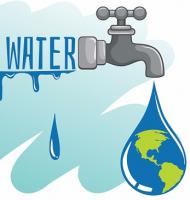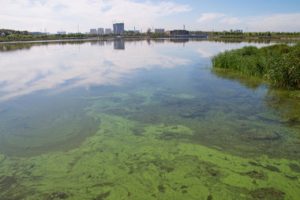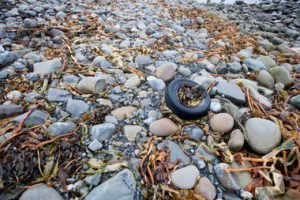 Our rivers, lakes, and beaches are beautiful, but are they safe? Every day, the toxic runoff from parking lots, busy roads and quiet subdivisions makes its way into our streams and oceans. Even the oil burning off from cars on the roads gets washed into the groundwater and streams by way of the storm drain every time it rains.
Our rivers, lakes, and beaches are beautiful, but are they safe? Every day, the toxic runoff from parking lots, busy roads and quiet subdivisions makes its way into our streams and oceans. Even the oil burning off from cars on the roads gets washed into the groundwater and streams by way of the storm drain every time it rains.

The more houses we build, the more pollution we will add to our environment. Every time we lay down a new parking lot or piece of roadway, there is an impact on our environment.
Planning growth and designing communities are part of the local government's job. If you are curious about what changes are about to happen where you live, start reading the local news sources, and save stories about development. If something concerns you, you can contact your officials to let them know how you feel. At home, there are things you and your family can do to cut back on water pollution in your neighborhood:
-
- Don't litter. Trash that is thrown in the streets usually winds up down storm drains.
- Watch those sprinklers. Place water sprinklers so they water the grass or flowers and not the street or sidewalk. Also, don't water on windy days or in the hottest part of the day so more water will be absorbed by plants and less will be wasted by the wind and the sun.
- About fertilizers: they are good for the garden, but too much of a good thing can hurt the environment by causing an algal bloom. Check with a garden store to find out how much fertilizer your soil needs and consider using organic fertilizers.
- Compost your grass clippings to make natural fertilizer or leave it on the lawn as a source of nutrients.
- Learn more about how to conserve our water in the library and online.
In the Library
Acid Rain by Louise Petheram.
Read how air pollution from cars, trucks, and power plants leads to the formation of strong acids which can harm lakes, fish, trees, and even historic buildings.Garbage Helps Our Garden Grow: A Compost Story by Linda Glaser.
See how you and your family can turn many things you might throw away into compost to help plants grow.Nobody Particular: One Woman's Fight to Save the Bays by Molly Bang.
Diane Wilson worked a shrimp boat off the coast of Texas and led the fight to stop yet another plastics plant coming in to pollute the bay with more industrial runoff.Our Endangered Planet. Oceans. by Mary Hoff and Mary M. Rodgers.
Describes concisely the global uses and abuses of the world's oceans and seas.Water: Our Precious Resource by Roy A. Gallant.
An in-depth look at Earth's waters and mankind's uses of water throughout history which includes ideas about planning better use of this critical resource in the future.On the Web
Clean Water Program: Just for Kids
Learn about all the ways that our creeks and beaches get polluted. From the City of Oceanside, California.EO Kids: Fresh Water
The premier issue of EO Kids explores how NASA observes and measures fresh water from space. From NASA's Earth Observatory (EO).Friends of the Rappahannock
Our Rappahannock River needs all the help it can get. The Friends sponsor activities such as river clean-ups and scenic trips, both by foot and by canoe. Click Events to find out what's going on.USGS Water Science School
Useful study materials on the water cycle, groundwater, water quality, surface water, and more.Where Does Your Water Shed?
The National Association of Conservation Districts has prepared helpful lesson plans and activities for early and upper elementary students to aid them in learning about what happens to the water they use.Families who have Central Rappahannock Regional Library cards can use our online databases of magazine articles and reference books for more information. These databases may be especially useful: Kids InfoBits, Gale Student Edition, and Encyclopaedia Britannica Kids


